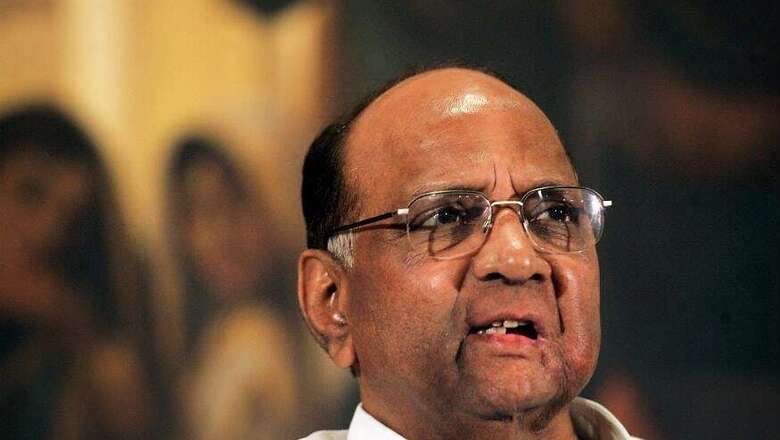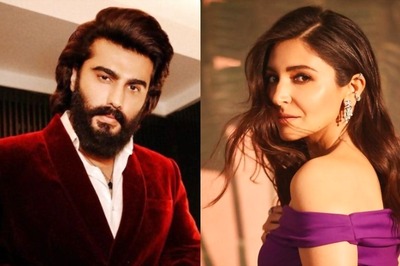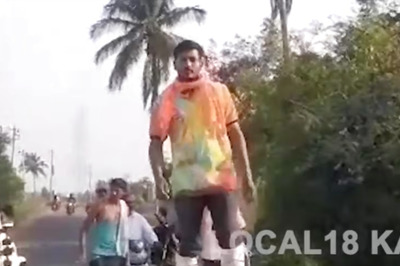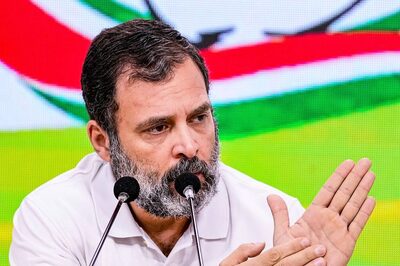
views
Congress and NCP leaders in Maharashtra have electrified the state politics by giving an in-principle go-ahead to a pre-poll alliance for the 2019 Lok Sabha elections. The move by the two opposition parties will trigger churning in the state politics.
Significantly, the decision has come close on the heels of Shiv Sena announcing its decision to part ways with long-time ally BJP and contest the next elections on its own.
The division in the Hindutva vote bank — if the BJP and the Sena do not mend fences — is bound to alter electoral calculations in Maharashtra which sends the largest contingent of lawmakers to the Lok Sabha after Uttar Pradesh.
In the last elections, the BJP won over 20 Lok Sabha seats and 122 Assembly seats in the state. Shiv Sena, once the senior partner in the saffron alliance, won 18 Lok Sabha and 63 Assembly seats. The Congress and the NCP who fought the 2014 General Election together got less than 10 seats.
Maratha strongman Sharad Pawar’s initiative to work with the Congress and like-minded parties has revived the defunct United Progressive Alliance (UPA) after the electoral set back in 2014.
Although it is unclear whether the Mamata Banerjee-led Trinamool Congress and the DMK have formally joined the UPA, these parties and the NCP have been by and large seen to be consistently opposing policies of the government and the BJP.
Now, the key issue is what will the Shiv Sena gain by announcing to go alone in Maharashtra. Currently, it is the second largest party in the Maharashtra Assembly after the BJP.
Its leaders are claiming that it will emerge strong and will win more seats if it gets an opportunity to field candidates in all seats.
The problem for Sena is its restricted footprint in a demographically diverse province. The party does not have a “face” in Vidarbha, Western Maharashtra and there is no guarantee whether its Hindutva card could damage the BJP and give a winning advantage to the Congress and the NCP in north Maharashtra and western Maharashtra.
But Shiv Sena leader Sanjay Raut is confident that the party’s strong cadre and following among OBCs, lower class and middle class in urban and rural areas, would make it relevant after the polls.
According to Sena sources, the BJP would be its main target in the coming battle. “We will finish politically if we go back to the BJP before the polls and we cannot afford to have tactical understand with the Congress and the NCP,” another Sena leader said.
The BJP leaders privately say that the party would get votes in the name of Prime Minister Narendra Modi conceding that neither the Chief Minister Devendra Fadnavis nor Union minister Nitin Gadkari are the vote catchers.
In the Congress, the party leaders from Vidarbha want the AICC to take a lead in forging a pre-poll alliance with the BSP which will attract Dalits across the state. But BSP supremo Mayawati firmly believes in the post-poll bargaining than a pre-poll alliance.
Marathas and minorities together have been UPA’s base vote bank. Congress’ ability to mobiles the third critical link in this combination — the Mahars or the Dalits — will significantly impact the electoral outcome.
Dalit leaders like Prakash Ambedkar of the BRP-Bahujan Mahasangh are seen to be close to the UPA. While the RPI(A) led by Ramdas Athavale is with the BJP.
But Sharad Pawar can bring the Left, the Samajwadi Party, Janata Parivar, the PWP and some Dalit factions closer to the Congress-NCP if the UPA chairperson Sonia Gandhi gives him a free hand. This is because neither the state Congress chief Ashok Chavan nor the CM Prithviraj Chavan shares the kind of personal rapport with these leaders as old warhorse Pawar does. Besides, Chavan and the NCP are not comfortable with each other.
A revival of UPA in Maharashtra is bound to strengthen the Congress in other states, especially in Madhya Pradesh, Chhattisgarh, Gujarat, and Karnataka who share borders with Maharashtra.
(The author is a senior journalist)




















Comments
0 comment